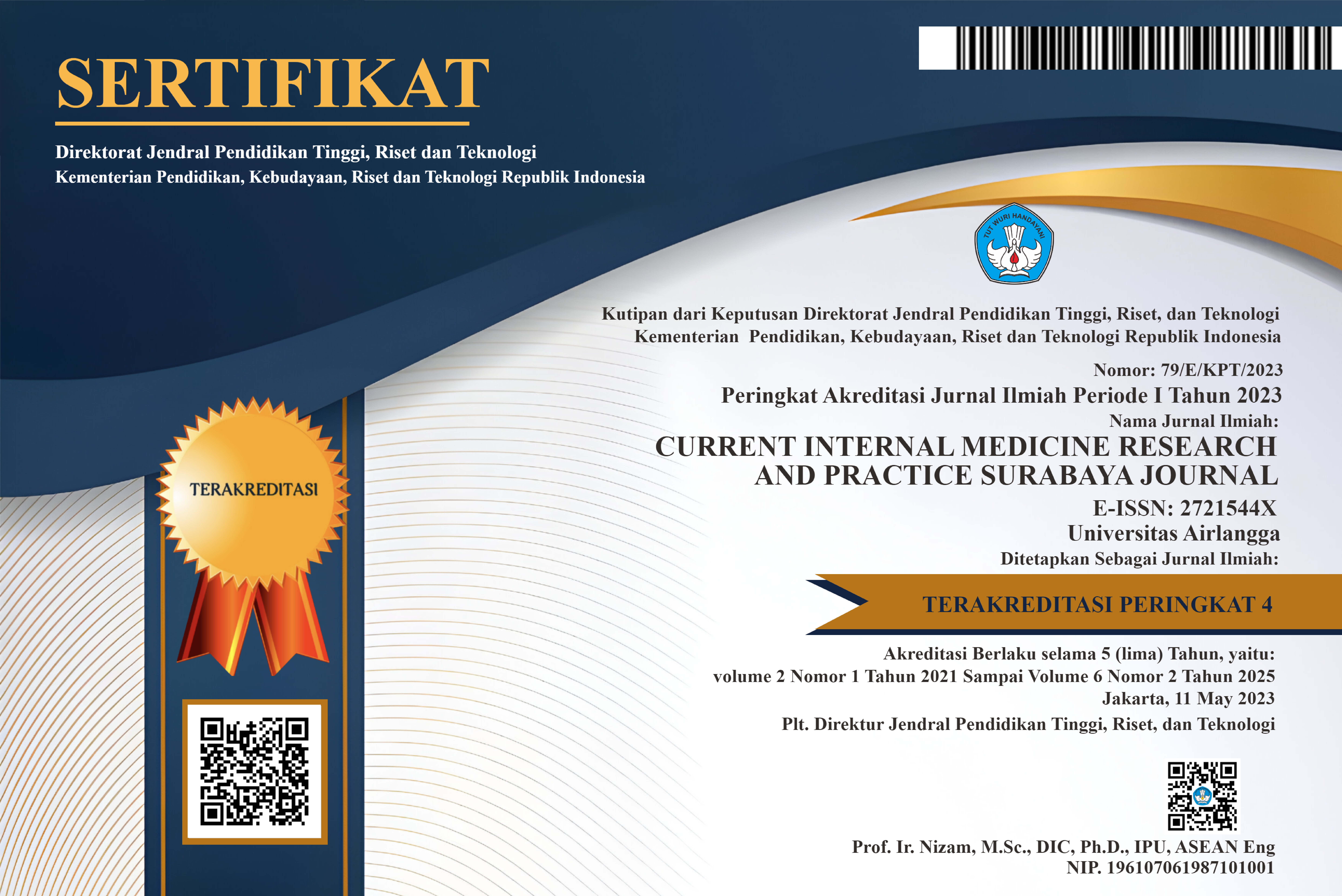Systematic Review and Meta-Analysis of the Efficacy and Safety Profile of Belimumab in Combination with Standard Therapy for Adults with Systemic Lupus Erythematosus
Introduction: Systemic lupus erythematosus (SLE) is a multi-system autoimmune disorder marked by pathogenic autoantibodies, resulting in considerable morbidity and mortality. Despite existing diverse treatment regimens, the need for more effective therapies persists. Recent advancements include monoclonal antibodies, such as belimumab, which can inhibit receptors tied to SLE’s pathogenesis. This meta-analysis aimed to evaluate the efficacy and safety of combining belimumab and standard therapy compared to placebo in SLE patients, utilizing as many indicators as possible to comprehensively assess the former's potential.
Methods: This study adhered to the Preferred Reporting Items for Systematic Reviews and Meta-Analyses (PRISMA) and the Cochrane Handbook for Systematic Reviews of Interventions. A thorough literature search was performed across various databases, including PubMed, ScienceDirect, ProQuest, and grey literature sources such as MedRxiv and BioRxiv. The data underwent statistical analysis, with I²<50% indicating low heterogeneity and p<0.05 denoting statistical significance.
Results: The literature search yielded seven records for analysis in this study. All the selected studies were multicenter, phase III/IV, randomized clinical trials published between 2011 and 2019. The selected studies' risk of bias was assessed using Cochrane’s Risk of Bias (RoB) 2 tool. The results indicated that belimumab and standard therapy significantly improved disease activity, reduced flare occurrences—particularly severe flares, lowered corticosteroid dosage, and enhanced key biomarkers compared to placebo. The safety profile was favorable, with significantly minimal side effects, infections, and mortality risks.
Conclusion: Belimumab combined with standard therapy demonstrates promising efficacy and safety for SLE treatment, suggesting its potential for broader adoption in clinical practice.
Highlights:
- This systematic review and meta-analysis provide a thorough and complete analysis of multiple indicators regarding the efficacy and safety of belimumab in the treatment of systemic lupus erythematosus (SLE), which have never been reviewed before.
- The findings of this study may lead to broader acceptance and adoption of belimumab as the standard treatment for SLE.
Adamichou C, Bertsias G (2017). Flares in systemic lupus erythematosus: Diagnosis, risk factors and preventive strategies. Mediterranean Journal of Rheumatology 28(1): 4–12. doi: 10.31138/mjr.28.1.4.
Al Sawah S, Zhang X, Zhu B, Magder LS, Foster SA, et al. (2015). Effect of corticosteroid use by dose on the risk of developing organ damage over time in systemic lupus erythematosus—The Hopkins Lupus Cohort. Lupus Science & Medicine 2(1): e000066. doi: 10.1136/lupus-2014-000066.
Arends EJ, Zlei M, Tipton CM, Cotic J, Osmani Z, et al. (2024). Disruption of memory B-cell trafficking by belimumab in patients with systemic lupus erythematosus. Rheumatology 63(9): 2387–2398. doi: 10.1093/rheumatology/keae286.
Bayer V (2019). An overview of monoclonal antibodies. Seminars in Oncology Nursing 35(5): 150927. doi: 10.1016/j.soncn.2019.08.006.
Birt JA, Wu J, Griffing K, Bello N, Princic N, et al. (2020). Corticosteroid dosing and opioid use are high in patients with SLE and remain elevated after belimumab initiation: A retrospective claims database analysis. Lupus Science & Medicine 7(1): e000435. doi: 10.1136/lupus-2020-000435.
Bramer WM, de Jonge GB, Rethlefsen ML, Mast F, Kleijnen J (2018). A systematic approach to searching: An efficient and complete method to develop literature searches. Journal of the Medical Library Association: JMLA 106(4): 531–541. doi: 10.5195/jmla.2018.283.
Bruce IN, Golam S, Steenkamp J, Wang P, Worthington E, et al. (2022). Indirect treatment comparison of anifrolumab efficacy versus belimumab in adults with systemic lupus erythematosus. Journal of Comparative Effectiveness Research 11(10): 765–777. doi: 10.2217/cer-2022-0040.
Carter EE, Barr SG, Clarke AE (2016). The global burden of SLE: Prevalence, health disparities and socioeconomic impact. Nature Reviews Rheumatology 12(10): 605–620. doi: 10.1038/nrrheum.2016.137.
Cochrane Bias Methods Group (2019). RoB 2: A revised Cochrane risk-of-bias tool for randomized trials. Retrieved 20 July 2023, from https://methods.cochrane.org/bias/resources/rob-2-revised-cochrane-risk-bias-tool-randomized-trials.
Cortés-Hernández J, Fernández-Cid CM, Andreu-Sánchez JL, Calvo-Alén J, García-Aparicio AM, et al. (2023). Reduction of disease activity, corticosteroids use, and healthcare resource utilisation in patients with systemic lupus erythematosus treated with belimumab in clinical practice settings: OBSErve Spain multicentre study. Reumatología Clínica 19(6): 312–318. doi: 10.1016/j.reuma.2022.08.001.
Doria A, Stohl W, Schwarting A, Okada M, Scheinberg M, et al. (2018). Efficacy and safety of subcutaneous belimumab in anti–double-stranded DNA–positive, hypocomplementemic patients with systemic lupus erythematosus. Arthritis & Rheumatology 70(8): 1256–1264. doi: 10.1002/art.40511.
Furie R, Petri M, Zamani O, Cervera R, Wallace DJ, et al. (2011). A phase III, randomized, placebo-controlled study of belimumab, a monoclonal antibody that inhibits B lymphocyte stimulator, in patients with systemic lupus erythematosus. Arthritis & Rheumatism 63(12): 3918–3930. doi: 10.1002/art.30613.
Ginzler E, Guedes-Barbosa LS, D’Cruz D, Furie R, Maksimowicz‐McKinnon K, et al. (2022). Phase III/IV, randomized, fifty-two–week study of the efficacy and safety of belimumab in patients of Black African ancestry with systemic lupus erythematosus. Arthritis & Rheumatology 74(1): 112–123. doi: 10.1002/art.41900.
Gordon C, Amissah-Arthur MB, Gayed M, Brown S, Bruce IN, et al. (2018). The British Society for Rheumatology guideline for the management of systemic lupus erythematosus in adults. Rheumatology 57(1): e1–e45. doi: 10.1093/rheumatology/kex286.
Hadisuwarno W, Rahmawati LD (2023). An Indonesian female with severe cutaneous lupus erythematosus: A case report and literature review. International Journal of Surgery Case Reports 107: 108336. doi: 10.1016/j.ijscr.2023.108336.
Higgins J, Thomas J, Chandler J, Cumpston M, Li T, et al. (Eds.) (2023). Cochrane Handbook for Systematic Reviews of Interventions, version 6.4 (updated August 2023). Cochrane. Retrieved from https://training.cochrane.org/handbook/archive/v6.4.
Iaccarino L, Bettio S, Reggia R, Zen M, Frassi M, et al. (2017). Effects of belimumab on flare rate and expected damage progression in patients with active systemic lupus erythematosus. Arthritis Care & Research 69(1): 115–123. doi: 10.1002/acr.22971.
Jordan NP, D’Cruz DP (2015). Efficacy, pharmacokinetic and pharmacodynamic profile of belimumab for systemic lupus erythematosus. Expert Opinion on Drug Metabolism & Toxicology 11(10): 1635–1645. doi: 10.1517/17425255.2015.1077808.
Levy RA, Gonzalez-Rivera T, Khamashta M, Fox NL, Jones-Leone A, et al. (2021). 10 years of belimumab experience: What have we learnt? Lupus 30(11): 1705–1721. doi: 10.1177/09612033211028653.
Malik B, Ghatol A (2023). Understanding how monoclonal antibodies work. Treasure Island, FL: StatPearls Publishing. Retrieved from https://www.ncbi.nlm.nih.gov/books/NBK572118/.
Martin J, Cheng Q, Laurent SA, Thaler FS, Beenken AE, et al. (2024). B-cell maturation antigen (BCMA) as a biomarker and potential treatment target in systemic lupus erythematosus. International Journal of Molecular Sciences 25(19): 10845. doi: 10.3390/ijms251910845.
Navarra SV, Guzmán RM, Gallacher AE, Hall S, Levy RA, et al. (2011). Efficacy and safety of belimumab in patients with active systemic lupus erythematosus: A randomised, placebo-controlled, phase 3 trial. The Lancet 377(9767): 721–731. doi: 10.1016/S0140-6736(10)61354-2.
Ohmura K (2021). Which is the best SLE activity index for clinical trials? Modern Rheumatology 31(1): 20–28. doi: 10.1080/14397595.2020.1775928.
Porritt K, Gomersall J, Lockwood C (2014). JBI’s systematic reviews. AJN, American Journal of Nursing 114(6): 47–52. doi: 10.1097/01.NAJ.0000450430.97383.64.
Qiu W, Yu T, Deng GM (2022). The role of organ-deposited IgG in the pathogenesis of multi-organ and tissue damage in systemic lupus erythematosus. Frontiers in Immunology 13. doi: 10.3389/fimmu.2022.924766.
Sandhu V, Quan M (2017). SLE and serum complement: Causative, concomitant or coincidental? The Open Rheumatology Journal 11(1): 113–122. doi: 10.2174/1874312901711010113.
Sciascia S, Foddai SG, Arbrile M, Radin M, Cecchi I, et al. (2024). Assessing the steroid-sparing effect of biological agents in randomized controlled trials for lupus: A scoping review. Immunologic Research 72(4): 538–553. doi: 10.1007/s12026-024-09463-y.
Singh JA, Shah NP, Mudano AS (2021). Belimumab for systemic lupus erythematosus. Cochrane Database of Systematic Reviews 2021(2). doi: 10.1002/14651858.CD010668.pub2.
Sohrabi C, Franchi T, Mathew G, Kerwan A, Nicola M, et al. (2021). PRISMA 2020 statement: What’s new and the importance of reporting guidelines. International Journal of Surgery 88: 105918. doi: 10.1016/j.ijsu.2021.105918.
Stohl W, Schwarting A, Okada M, Scheinberg M, Doria A, et al. (2017). Efficacy and safety of subcutaneous belimumab in systemic lupus erythematosus: A fifty‐two–week randomized, double‐blind, placebo‐controlled study. Arthritis & Rheumatology 69(5): 1016–1027. doi: 10.1002/art.40049.
Stojan G, Petri M (2017). The risk benefit ratio of glucocorticoids in SLE: Have things changed over the past 40 years? Current Treatment Options in Rheumatology 3(3): 164–172. doi: 10.1007/s40674-017-0069-8.
Sumariyono, Kalim H, Setyohadi B, Hidayat R, Najirman, et al. (Eds.) (2019). Rekomendasi Perhimpunan Reumatologi Indonesia: Diagnosis dan pengelolaan lupus eritematosus sistemik. Jakarta: Indonesian Rheumatology Association. Retrieved from https://reumatologi.or.id/diagnosis-dan-pengelolaan-lupus-eritematosus-sistemik/.
Sutanto H, Yuliasih Y (2023). Disentangling the pathogenesis of systemic lupus erythematosus: Close ties between immunological, genetic and environmental factors. Medicina 59(6): 1033. doi: 10.3390/medicina59061033.
Tanaka Y, Bass D, Chu M, Egginton S, Ji B, et al. (2019). Efficacy and safety of intravenous belimumab in Japanese patients with systemic lupus erythematosus: A subgroup analysis of a phase 3 randomized placebo-controlled trial. Modern Rheumatology 29(3): 452–460. doi: 10.1080/14397595.2018.1480915.
The Cochrane Collaboration (2020). Review Manager (RevMan), version 5.4. Retrieved from https://test-training.cochrane.org/online-learning/core-software-cochrane-reviews/review-manager-revman/download-revman-5.
Tian J, Zhang D, Yao X, Huang Y, Lu Q (2023). Global epidemiology of systemic lupus erythematosus: A comprehensive systematic analysis and modelling study. Annals of the Rheumatic Diseases 82(3): 351–356. doi: 10.1136/ard-2022-223035.
Trilistyoati D, Agustina B, Awalia (2021). Clinical profile and incidence of infection in systemic lupus erythematosus patients at Medical Inpatient Installation, Department of Internal Medicine, Dr. Soetomo General Academic Hospital, Surabaya, Indonesia in 2016. Majalah Biomorfologi 31(2): 49–56. doi: 10.20473/mbiom.v31i2.2021.49-56.
Vaillant AAJ, Jamal Z, Patel P, Ramphul K (2023). Immunoglobulin. Treasure Island, FL: StatPearls Publishing. Retrieved from https://www.ncbi.nlm.nih.gov/books/NBK513460/.
Wang Y, Xiao S, Xia Y, Wang H (2022). The therapeutic strategies for SLE by targeting anti-dsDNA antibodies. Clinical Reviews in Allergy & Immunology 63(2): 152–165. doi: 10.1007/s12016-021-08898-7.
Widyanrika FA, Mudjanarko SW, Rochmanti M, Ardiany D, Permana PBD (2024). Association between the duration of steroid therapy with hyperglycemia in patients with systemic lupus erythematosus (SLE). Current Internal Medicine Research and Practice Surabaya Journal 5(1): 17–22. doi: 10.20473/cimrj.v5i1.53043.
Zen M, Salmaso L, Barbiellini-Amidei C, Fedeli U, Bellio S, et al. (2023). Systemic lupus erythematosus incidence and prevalence in a large population-based study in northeastern Italy. Rheumatology 62(8): 2773–2779. doi: 10.1093/rheumatology/keac685.
Zhang F, Bae SC, Bass D, Chu M, Egginton S, et al. (2018). A pivotal phase III, randomised, placebo-controlled study of belimumab in patients with systemic lupus erythematosus located in China, Japan and South Korea. Annals of the Rheumatic Diseases 77(3): 355–363. doi: 10.1136/annrheumdis-2017-211631.
Copyright (c) 2025 Mochamad Rangga Alif Dharmawan, Maftuchah Rochmanti, Awalia, Citrawati Dyah Kencono Wungu

This work is licensed under a Creative Commons Attribution-ShareAlike 4.0 International License.
Copyright (c) Author
1. The journal allows the author to hold the copyright of the article without restrictions.
2. The journal allows the author(s) to retain publishing rights without restrictions.
3. The formal legal aspect of journal publication accessibility refers to Creative Commons Atribution-Share Alike 4.0 (CC BY-SA).






















